February 17, 2025
Grow Soil Health with Mushroom Blocks
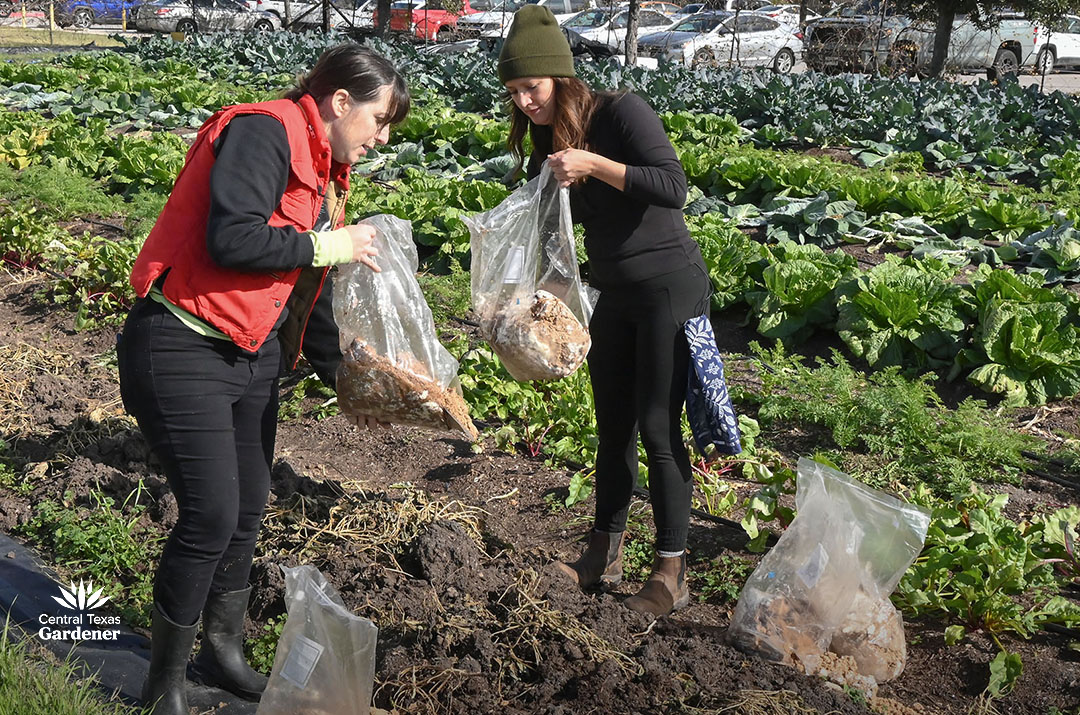
What about that incredible, edible mushroom? It’ll keep on growing—soil health, that is—when smashed, mashed, and mulched. Central Texas Food Bank garden manager Hannah Beall and Angel Schatz, co-founder of the Central Texas Mycological Society, show how these spent grow blocks can help feed the community.
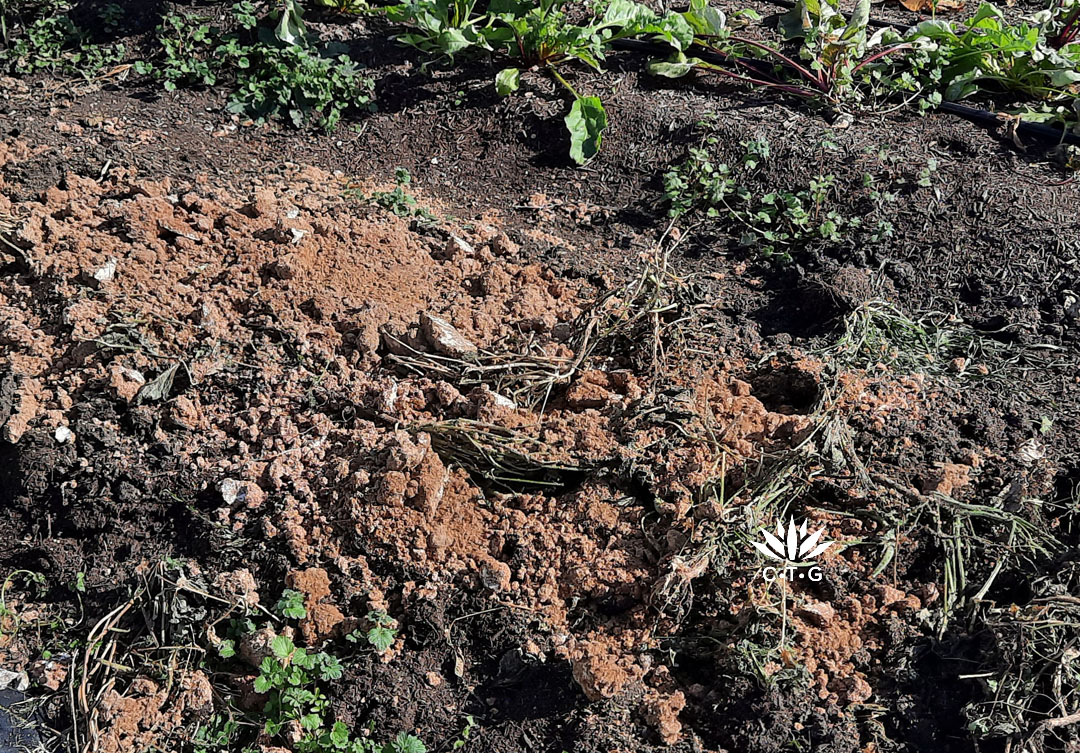
“We have pretty hard clay here. It really seems to help add some tilth to that and help aerate the soil,” Hannah said.
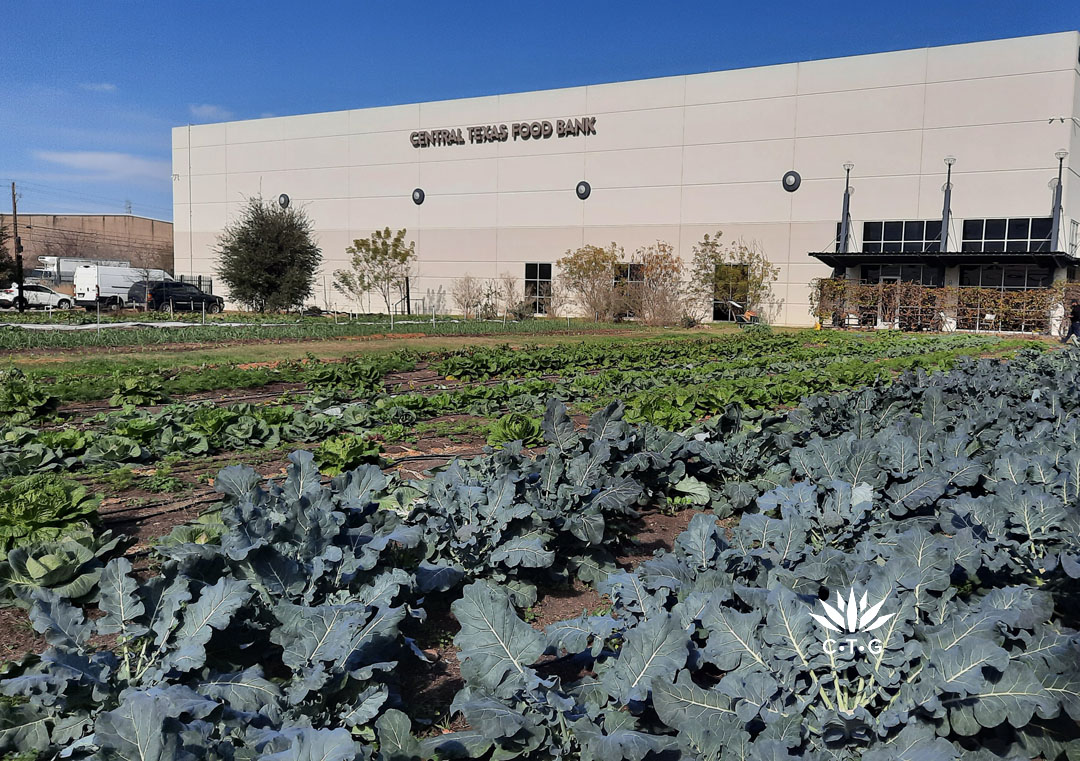
On about a third of an acre in southeast Austin, the Central Texas Food Bank gardens produced 23,000 pounds of delicious fresh fruits and vegetables in the last two years. “And that goes out to our community who is experiencing hunger through our programs. We have an onsite pantry,” Hannah told us. “If we have too much for that, it goes out on mobile distributions to one of our 21 counties that we serve in Central Texas.”
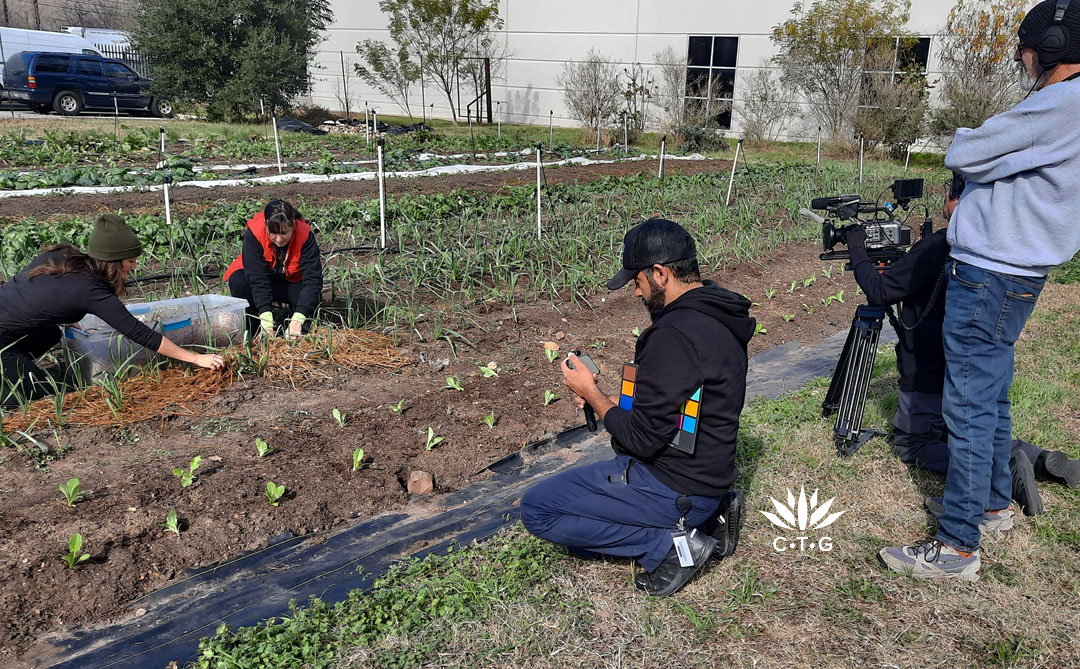
On a chilly January day between freezes, we met up with Hannah and Angel to learn more. Our audio person, Robert Moorhead, is a fan of spent mushroom blocks—reaping harvests that his wife dries for soup stock. Director Ed Fuentes was joined by Joe Rocha on a second camera.
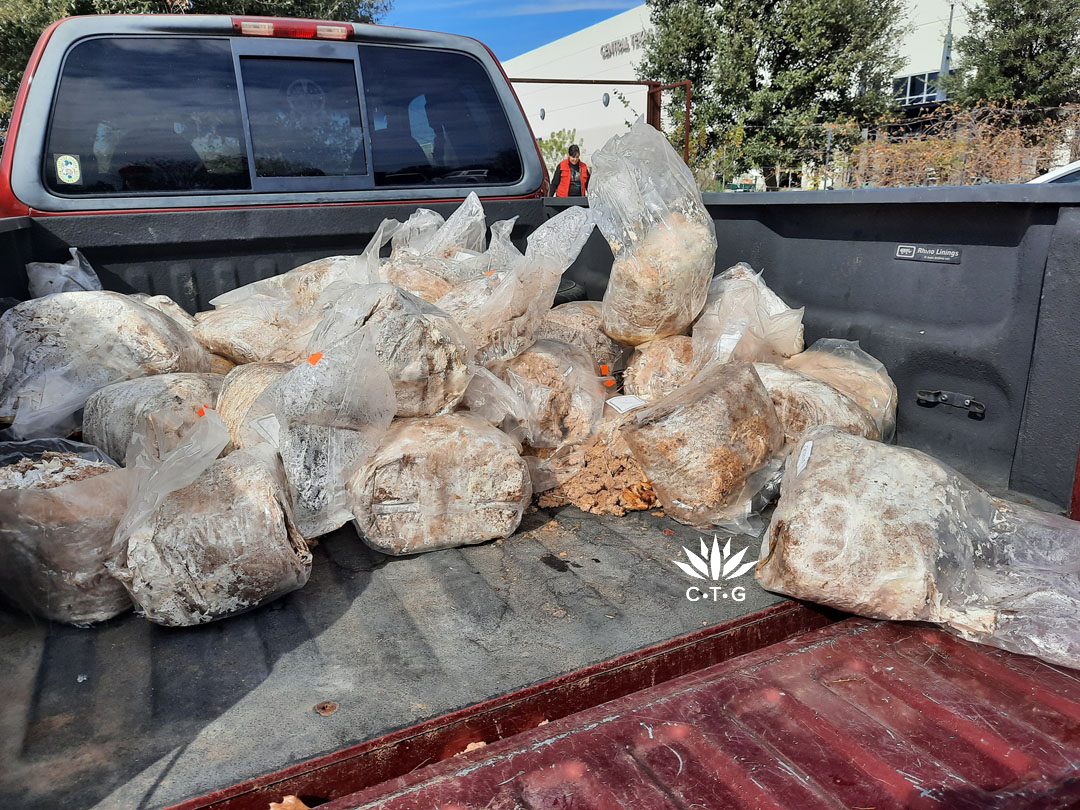
Central Texas Mycological collects 10,000+ spent mushroom grow blocks every week to share with the community. A grant last fall enables them to deliver to organizations, but they also hold mushroom block giveaways all around town.
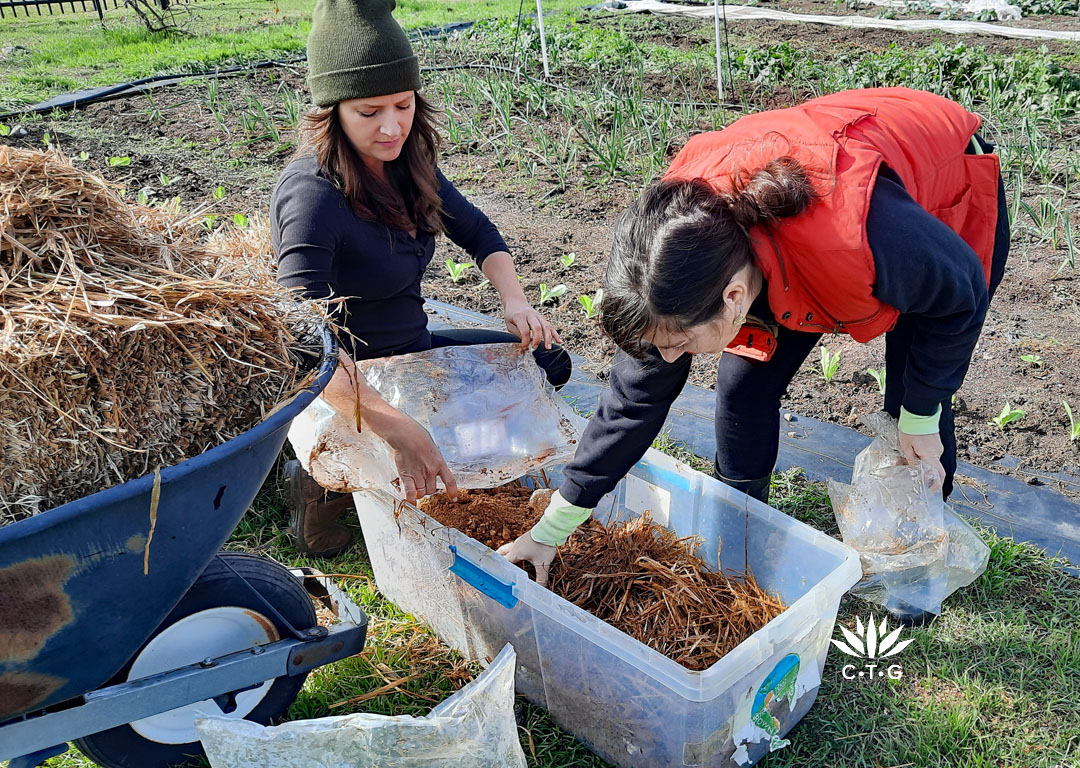
Angel and Hannah showed how they mix up straw and mushroom blocks. “And that mycelium in the mushrooms—the decomposer fungi–is going to continue to break down and accelerate the decomposition process of the straw,” Angel said. “You want to make sure that you’ve got a lot of moisture as well, because that’s going to help both your plants and it helps jumpstart this continued decomposition.”
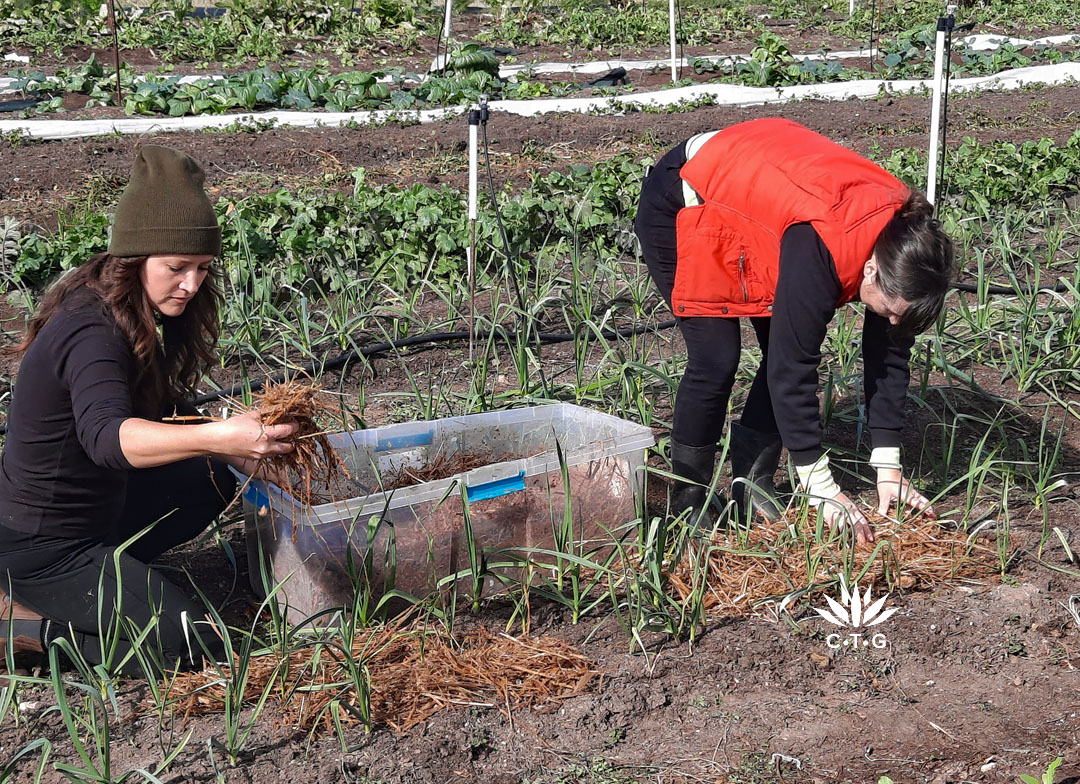
On that day, they mulched their garlic to feed it some extra nutrients from the straw and mushroom mixture.
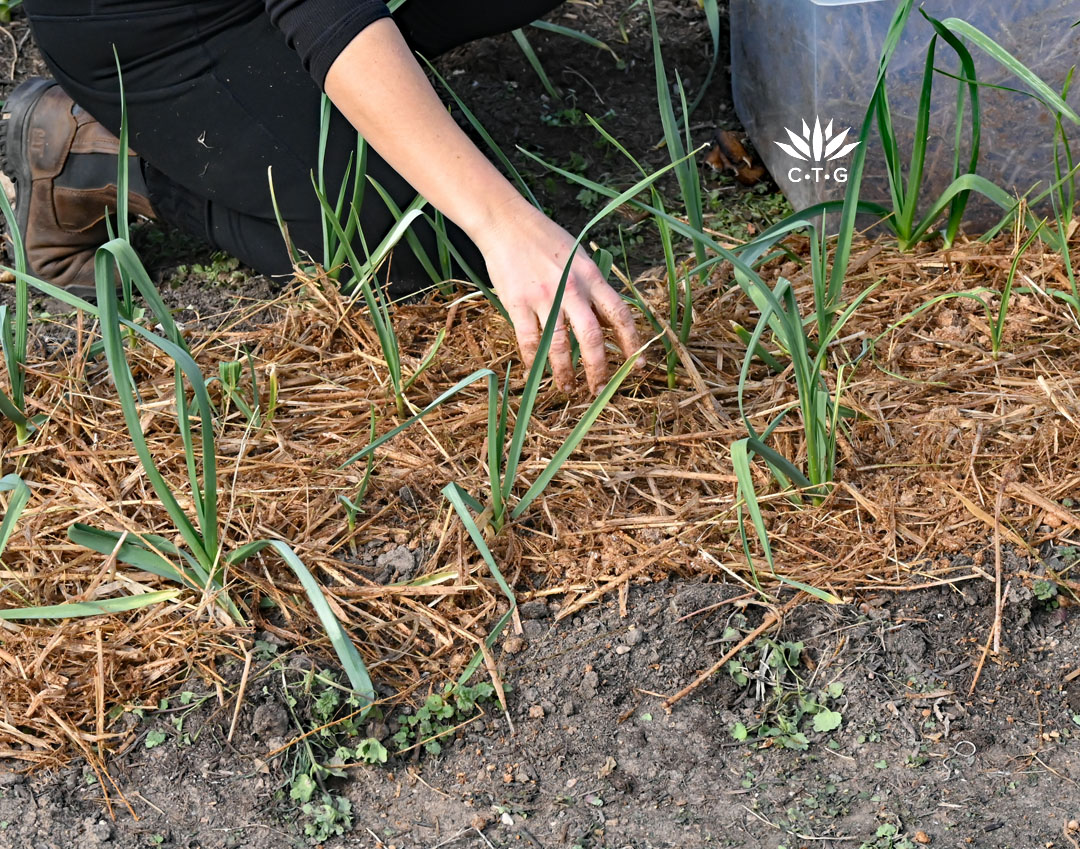
Hannah likes to use this method for long season crops to help mitigate weeds and help feed the the plants. Garlic is a perfect choice, since they plant in late October for late May harvests. It’s a good option for tomatoes and peppers, too.
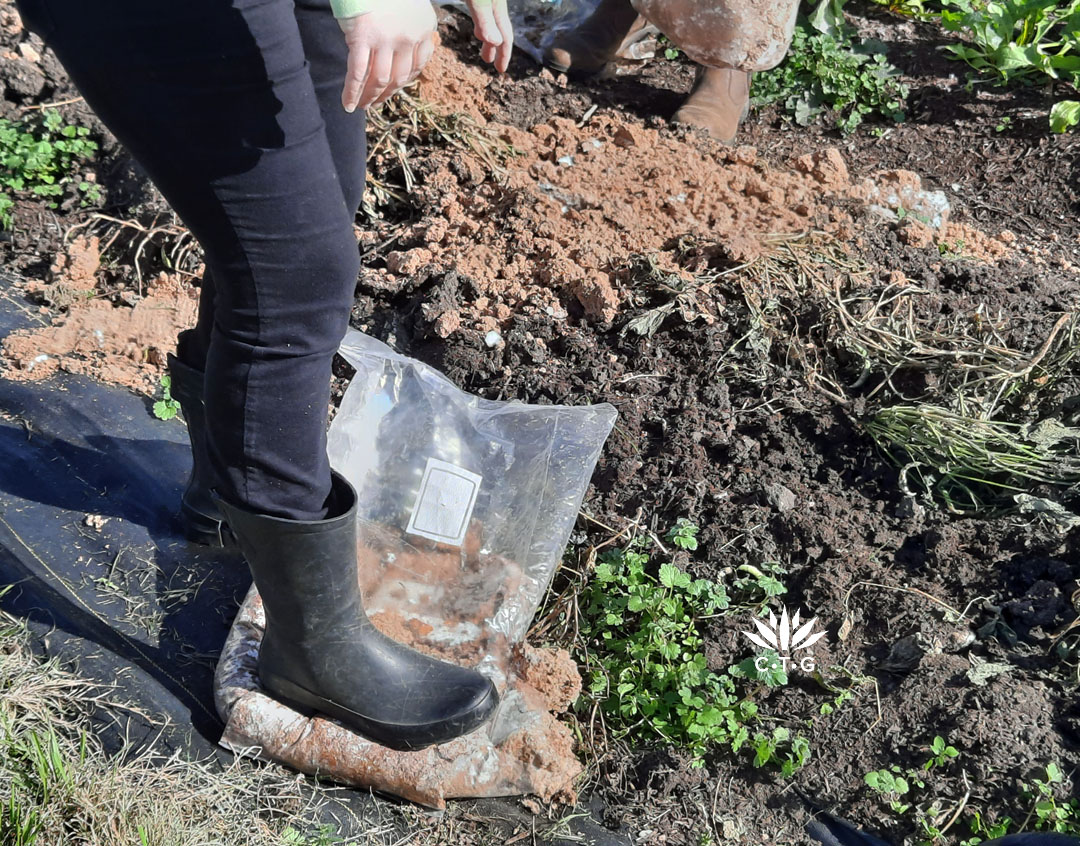
They also smash up the bags to spread across the soil. Sometimes they’ll even get bonus mushrooms popping up after a rain, like Robert has. That white substance is the mycelium.
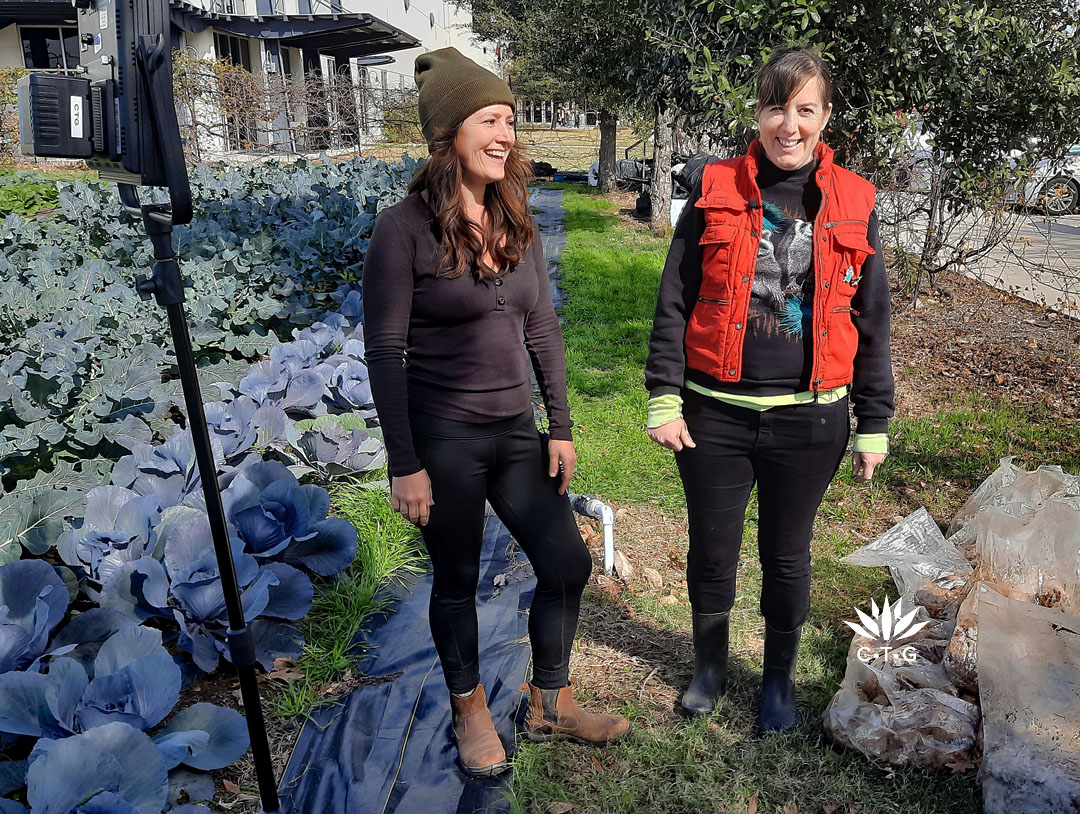
Check out Central Texas Mycological Society for giveaways, events, wild mushroom forays and to volunteer.
And find out how to volunteer at the Central Texas Food Bank gardens, a great way to learn with Hannah Beall and help the community!
Two other events:
Native Plant Society Spring Symposium, March 8. Sold out for in person, but register for virtual attendance.
Budding Out Plant Sale and Festival: John Fairey Garden, March 15.
Thank you for stopping by!
tags:

